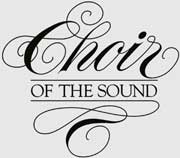Working on “Light, Beauty, Peace” over the summer was a good opportunity for us to learn what it takes to be a virtual choir. For some of us less technologically experienced members, watching a guide video on one device while recording ourselves with another was a brand new experience. Singing became a whole new challenge, with a different set of rules and requirements.
Our performances usually take place in halls with acoustics designed to amplify sound, and carry it to the most distant seats. In rehearsals, we practice listening to the other singers around us, and blending our tone with theirs. In spaces such as Saint Mark’s Cathedral, we learn to listen “sideways” to each other rather than to the reverberations bouncing back to us. We emphasize the consonant sounds and over-enunciate, so the audience can appreciate the words. Venues with “lively” acoustics make for a better audience experience, so the techniques for effectively singing in them become second nature.
When recording our parts for a virtual choir, we have to forget those techniques, and seek out a different sort of space. The best place for recording is an acoustically dead space, with no echo; bedrooms, where all the fabric in bedding and curtains will absorb sound, are a good choice. Instead of punching our T, K, and P sounds, we need to tone them down; the microphone picks them up just fine. We still have accompaniment and other voices to sing with, but they are recordings, coming to us through headphones or earbuds. Each singer needs to stay synchronized with what they’re hearing, and with the video of the director (the “guide video”), while making sure the microphone can’t hear anything but their voice.
One of the biggest lessons that came out of our first experience was that getting a good sound recording and a good video recording in one take is a tall order. The video portion calls for good lighting and a neutral background; the recording device (for most of us, our phones) needs to be positioned near the device playing the video of the director, so that singers can be looking at the camera. Getting that set up in a room with the right sound quality, and finding a way to hold sheet music that keeps it visible to the singer but not to the camera, is not an easy thing. For our next project, the tech team has asked us to make separate recordings for our audio and our video, and I, for one, say a heartfelt thanks for letting me focus on making one recording that sounds good, and making another that looks good.
In the coming weeks, we will put what we have learned to use as we record the videos for our holiday show. Join us on December 6, on a screen near you, to see how much progress we’ve made.

